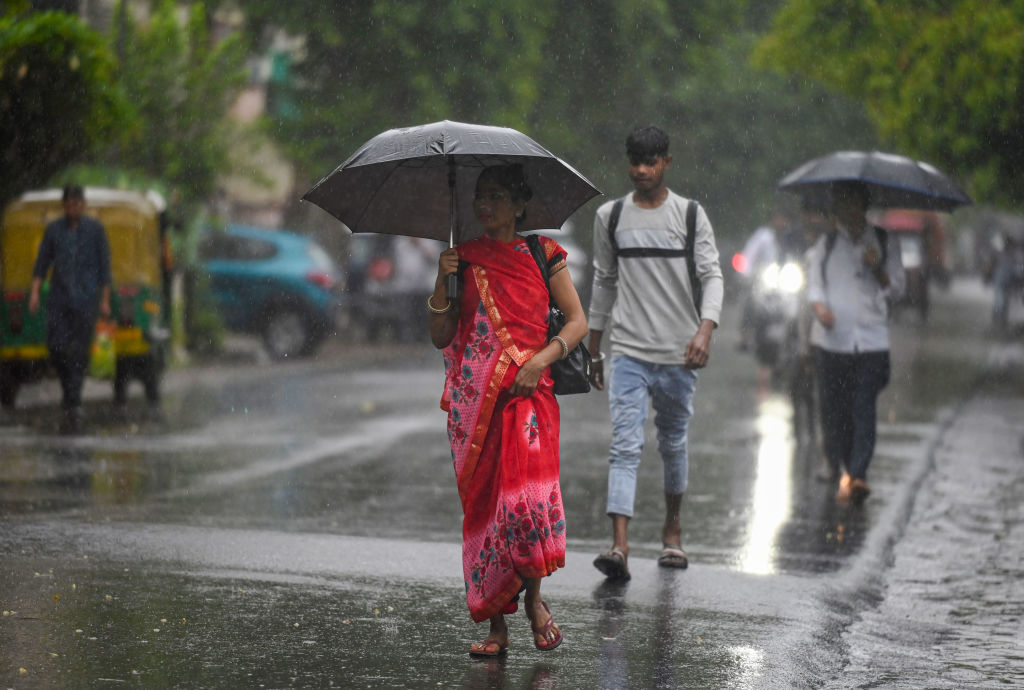The India Meteorological Department (IMD) has predicted widespread rainfall across Gujarat in the coming days, with several districts placed under yellow and orange alerts. The forecast indicates the likelihood of intense showers through the first week of September.
A yellow alert has been issued for Mehsana, Sabarkantha, Gandhinagar, Aravalli, Kheda, Ahmedabad, Anand, Panchmahal, Dahod, Mahisagar, Vadodara, Chhota Udepur, Narmada, Bharuch, Surat, Dang, Tapi, Navsari, Valsad, Daman, and Dadra and Nagar Haveli.
For September 1–2, heavy rainfall is expected in Sabarkantha, Aravalli, Panchmahal, Dahod, Mahisagar, Navsari, Valsad, Daman, and Dadra and Nagar Haveli.
On September 3, an orange alert has been issued for Chhota Udepur and Narmada, where very heavy rain is forecast. A yellow alert remains in place for Panchmahal, Dahod, Vadodara, Bharuch, Surat, Dang, Tapi, Navsari, Valsad, Daman, and Dadra and Nagar Haveli.
On September 4, an orange alert has been declared for Dang and Tapi, while a yellow alert continues for Panchmahal, Dahod, Vadodara, Chhota Udepur, Narmada, Bharuch, Surat, Navsari, Valsad, Daman, and Dadra and Nagar Haveli. Additionally, the Saurashtra-Kutch districts of Amreli, Bhavnagar, Gir Somnath, and Diu may also experience heavy showers.
By September 5, orange alerts are expected to ease. However, heavy rainfall is still likely at isolated places across Sabarkantha, Aravalli, Kheda, Anand, Panchmahal, Dahod, Mahisagar, Vadodara, Chhota Udepur, Narmada, Bharuch, Surat, Dang, Tapi, Navsari, Valsad, Daman, Dadra and Nagar Haveli, Amreli, Bhavnagar, Gir Somnath, and Diu.
Gujarat has so far received nearly 85 per cent of its seasonal average rainfall this monsoon, with exceptionally heavy showers in the past week boosting the number of talukas crossing 1,000 mm to 44 and filling the state’s river systems to near capacity.
The precipitation surge has significantly pushed water storage levels upward: the Sardar Sarovar Dam now stands at approximately 84 per cent capacity, while the state’s 206 monitored reservoirs average around 78 per cent filled — with 67 already above 100 per cent, 27 between 90–100 per cent, and 27 more between 80–90 per cent.
Key dams across regions reflect a similarly robust picture: Dharoi Dam is at 82 per cent capacity, receiving inflows of over 42,000 cusecs with regulated outflow; while Kadana (Mahisagar) has begun releasing nearly 1,00,000 cusecs, prompting alerts in downstream districts. In recent days, widespread rainfall has filled 76 dams to between 70–100 per cent capacity, with official warnings issued for 26 of them, underscoring the urgency of vigilant water management.
IANS














